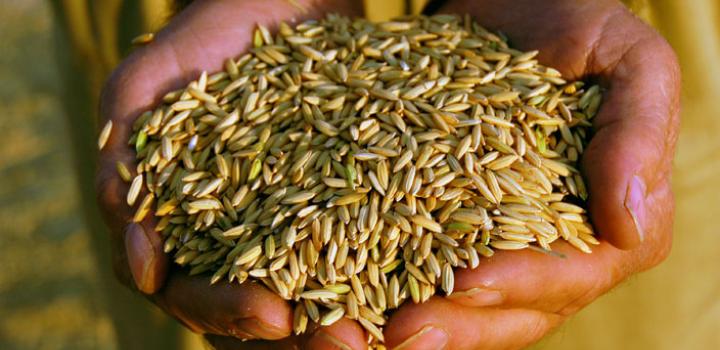Arkansas rice crop may have lowest milling yield ever in 2024
by January 14, 2025 2:13 pm 1,040 views

Arkansas rice farmers got off to a solid start in 2024 with one of the earliest planting seasons ever. However, a myriad of problems plagued producers as the season evolved and it could lead to record lower milling yields on fewer acres once the numbers are calculated, according to Jarrod Hardke, extension rice agronomist for the University of Arkansas System Division of Agriculture.
In early March 2024, the state was flirting with record early planting across more than 1.4 million acres of rice, bumping up against Arkansas’ generally acknowledged capacity for the crop.
“We had the majority of the rice crop in the ground by the third week of April. It was incredible,” said Hardke. “But around that third week of April, periodic rains began to develop and continued all the way into June, and everything stalled out.”
While the U.S. Department of Agriculture (USDA) numbers haven’t been finalized, Hardke said he believes the state’s grain yield will be very near those of 2021 when average yield exceeded 7,630 pounds per acre across more than 1.2 million harvested acres. With such widespread low milling yields, however, the profitability of the 2024 crop remains in doubt.
Grower sentiment was positive in June and July, when the rains receded and temperatures rose, he said. Concerns that the crop might have lost significant nitrogen fertility due to the saturated soils dissipated, while higher nighttime temperatures appeared not to have impeded grainfill and weed escapes proved minimal.
“By July, we felt this was a really good-looking crop, and the conditions were really good,” Hardke said “We were on track for an early planted crop to be harvested early.”
One farmer was able to harvest his crop by July 31, but many didn’t harvest that early. A temperature drop at the time led many of the state’s rice producers to pause.
“The crop just didn’t look ready to many growers,” said Hardke.
“It was another full week before most producers began their rice harvest,” he said. “Frankly, more growers should’ve started on that earlier date. Grain moisture began to fall, and the big story became that Arkansas had planted so much rice that we wouldn’t be able to harvest it fast enough.”
The rising August temperatures, combined with the rapidly falling grain moisture, led to lower milling yields. Hardke said he began receiving calls from growers and consultants early in the harvest, looking for answers and hoping for a turnaround.
“We thought we were beginning to see a little improvement as we neared September, but over Labor Day, we saw a weather pattern shift, bringing rains through the state,” said Hardke. “That began to cause some rewetting and drying of the grain that was out there, which started pulling milling yields down further.”
When remnants of Hurricane Francine pushed through the Mid-South, making landfall over Louisiana on Sept. 11 shortly before being downgraded to a tropical storm on Sept. 12, Arkansas growers still had about one-third of the state’s rice crop in the ground. While Arkansas was spared the worst of the storm’s direct effects, the wind and rains throughout the Delta region only compounded Arkansas rice’s woes.
“The milling yields on everything after the hurricane came through were just junk,” said Hardke. “Ridiculously bad. We’re now looking at what will be one of the lowest milling yields ever recorded in Arkansas, if not the lowest we’ve ever had.”
Rice producers face other woes in 2025 after milling yields were bad in 2024. The USDA reports that a record amount of rice will be on the market this year with 533.7 million tons of rice being produced. The expanded rice production worldwide will likely lead to lower prices and cut further into producers’ profits.
Arkansas is the leading rice producer in the U.S. growing about half the country’s crop annually.
